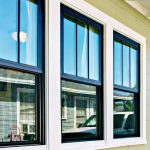Several homeowners think that spring is the season to do a thorough cleaning throughout the interior of their home. While it is important to keep your home clean and a great way to spot potential issues, some of the most important spring maintenance tasks are aimed at inspecting and maintaining the exterior structure of your home. A yearly roof inspection and preventative maintenance are an essential part of being a homeowner. Being able to recognize potential problems with your roof can save you thousands in costly roof repair. And when is the best time to inspect your roof? Spring!
Now that we’re officially into spring and heading towards summer, it’s a good time to think about the preventive maintenance as a means to prepare your roof for next winter and stay proactive for the summer months ahead.
A Maintenance Roof Inspection
The best time to inspect your roof is in the early morning before it gets too hot and avoid high winds or other potentially dangerous weather conditions. To examine your roof as thoroughly as you can, it will require the use of a ladder. Make sure to use a ladder that is appropriate for the height of your roof and for your weight. As a safety precaution, do not wear sandals or flats but wear boots with good treading so your feet are properly secure while inspecting your roof. Gloves are also recommended when handling debris on your roof and when checking shingles. If you do not feel comfortable inspecting the roof yourself, you may want to consider hiring a professional.
In addition to disposing of leaves and debris, a qualified roofing specialist will water-test both internal and external drains and inspect gutters and downspouts. A professional can also check the little things that can escape such as examining strainers to ensure that they are in place and that the bolts holding them are secure.
Severe Weather Conditions
To make sure your roof is prepared for any type of weather during the summer months, here are tips to prepare beforehand and how to properly inspect your roof afterwards.
Before
Roofing materials like stone-coated steel shingles provide durable, good looking and long lasting protection from the elements in addition to a host of other benefits. Storm doors can help protect your exterior doors from hail, wind, and flying debris. Protective products such as these will help your home stand up to harsh weather conditions. In addition to physical protection, you should make sure you understand your insurance policy coverage. Damage related to flooding, even if caused by the same storm, may not be covered.
Before a storm, we suggest creating a video and taking pictures of your home’s interior and exterior. You have the option to upload these videos and pictures to the “cloud” using a service like Dropbox, Flickr, or Google+, or email them to yourself or a friend. In addition to documenting your personal items, it can be helpful to maintain a list of major home improvements like roof repairs and siding installation. Some insurance companies even allow you to upload your videos, photos, and lists to a cloud database linked to your policy. Even if you only have a short time to document your home’s condition before a storm hits, having some documentation is better than none. Make a list of your policy numbers and insurance company contact information, and email it to yourself or upload it to the cloud.
After
Wisconsin storms can bring wind, rain, and hail. High winds can knock down tree limbs and power lines, causing significant damage to your roof and tearing off shingles. After a thunderstorm, hurricane, or hailstorm, you should inspect your home inside and out for damage. From the outside, check your roof for missing shingles and especially around your chimney. Make sure that your chimney, gutters, vent covers, and any exhaust pipes or outlets are undamaged and in good condition and that your gutters are clear of debris. Also inspect your siding for any damage from hail, tree branches, or debris. From the inside, inspect your attic, ceilings and walls for leaks or water damage. Then, document any problems that you see in writing and with photographs. Do not take any chances if you see downed power lines or other potentially hazardous conditions. If your roof appears to have structural damage, be careful while conducting your inspection and do not climb onto it to check. If you have any doubts about your home’s safety, contact a professional roofing and siding inspector to conduct a safe and professional inspection.
High winds, heavy rainfall, snow, or hail can all have a negative impact on your roof over time. Inspecting your roof after this kind of weather can keep you ahead of any weather-related damage. As far as the warm temperatures in the summer months, heat waves are inevitable in summer, so prepare your home before the harsh weather arrives. Check the weather stripping around doors and windows to keep the cool air in.
Keep Gutters, Drains and Roof Clean
Regularly removing leaves, branches, and other debris can prevent drainage issues from occurring. Clearing away the likes of moss and algae is also a good way to maintain the efficiency of your current roof system. It is especially important to inspect your roof to see if there was any damage over the winter months. It may be possible to repair some minor damage while other issues may require roof replacement options. Clogged gutters can expose your home to water damage, and these clogs are often not noticed unless gutters are inspected. If living in an area where gutters are prone to clogging and debris, installing products like gutter helmets can be beneficial. Gutter helmets deflect debris and help keep gutters clean and free from clogs.
Damaged or Missing Shingles Inspection
With the summer season around the corner, it is better to identify and replace any damaged or missing shingles now rather than wait for strong winds to rip them off or cause further damage. While on the roof look for structural damage and remove debris. Inspect the flashings to see if they have deteriorated and also look at any caulking for signs of holes or leaks. A few lost shingles and minor damage is not a sign that you need a new roof. But you do need to make the repairs promptly. If you have a large loss of shingles on your roof, first perform an inspection to determine the extent of the damage. You can do this yourself or contact a licenses inspector. It’s very important to know what condition your roof is in before making any decisions on repairs.
The most responsible action you can take is to consult a licensed inspector and/or contact your insurance claims adjuster. These professionals will be able to offer an informed recommendation. Be proactive and protect your investment in your roof today.
About Us
At Great Plains Windows and Doors, We are all Andersen, All the time. And we’re the only ones doing it this way in the Twin Cities. Come see what we have to offer.
Performing a visual inspect regularly, or after severe weather will keep you apprised of any current or potential issues. While following these roof maintenance tips can help you stave off some roofing problems, a bad winter can take a serious toll on your roof and cause irreversible damage. To get the roof replacement process started, contact the roofing experts at Great Plains Windows at 651-207-4571 or visit us online at www.GreatPlainsWindows.com to request a free estimate.








